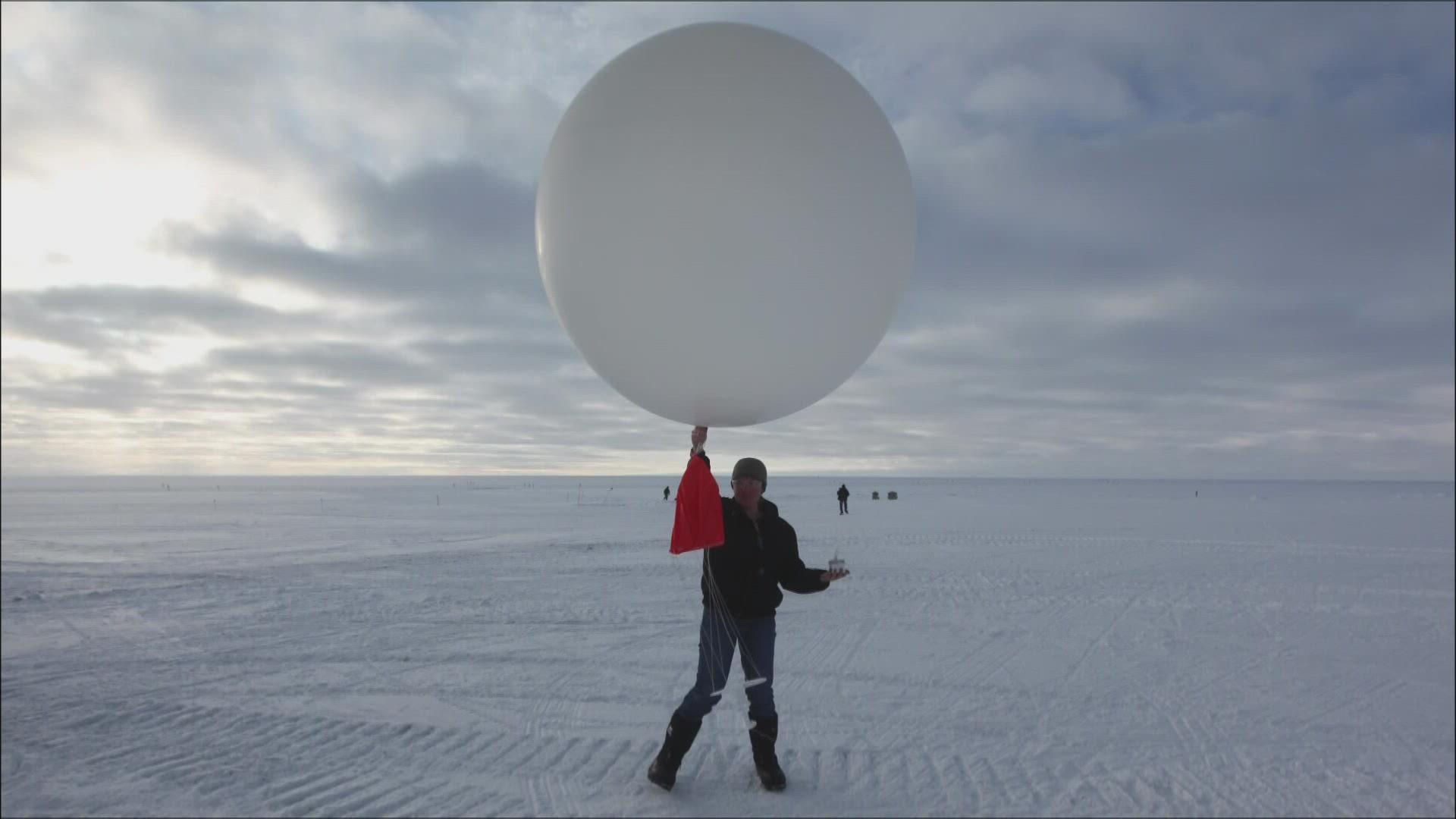FORT WORTH, Texas — The National Weather Service in Fort Worth is responsible for forecasting the weather across all North and Central Texas.
Part of the responsibility includes launching weather balloons every day twice a day. This is a practice that is done around the entire world at the same time every day. This data is critical for forecasting day-to-day weather, winter weather and severe weather.
Daniel Huckaby is a fellow Texas A&M meteorologist now working for the NWS. He shows us how weather balloons are prepared for their flight.
The idea is simple: A radiosonde is a box that gathers temperature, relative humidity and pressure is hooked on to a balloon. As the balloon rises, the box gathers data through the atmosphere. This helps us understand how much moisture is in the air, how quickly it's cooling down with height and how strong the winds are.
Weather balloons are made from latex and filled with hydrogen. The latex is a strong material so that when the balloons take flight and expand, they won't pop until it goes up about 20 miles. These balloons can put up with intense winds and frozen precipitation.
Once the balloon pops, the radiosonde falls back to Earth. Attached to the radiosonde is a photodegradable parachute. This parachute helps the radiosonde fall gently instead of it crashing down on something or someone.
When all of this is prepped, it is time for takeoff! The balloon is released in an open field. It takes the parachute followed by the radiosonde and up it goes! The higher it climbs, the more data it's gathering.
That radiosonde sends back data instantaneously. These numbers are critical help computers generate forecasting maps.
The data also helps forecasters figure out the strength of the cap during severe weather season, what kind of precipitation winter weather will bring and the directions of winds for the day.

